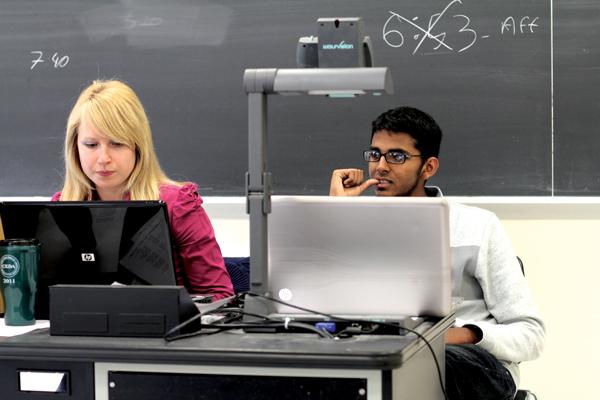
Binghamton University hosted the Northeast Regional Opener, an annual college debate tournament, run by the Cross Examination Debate Association (CEDA).
It was the second consecutive calendar year that BU served as the Northeast Regional Opener’s venue, prior to which the tournament was held at King’s College in Wilkes-Barre, Penn. BU typically hosts multiple different tournaments each year, according to Joe Leeson-Schatz, director of BU Speech and Debate.
There were 159 teams from 25 universities including Cornell University, various City University of New York schools, Liberty University, Rutgers University and University of Rochester. The Opener was held Friday, Saturday and Sunday in the Fine Arts Building.
The tournament included “novice,” “junior varsity” and “varsity” divisions, all of which conducted debate under the guidelines of the CEDA and the National Debate Tournament (NDT). The CEDA formulated the “resolution” that speakers debated over the weekend, which deals this year with what the United States’ response to the Arab Spring should be.
Cornell beat CUNY in the varsity finals. In the junior varsity bracket, Rutgers beat Cornell, and in the novice bracket, the United States Military Academy at West Point beat CUNY.
Leeson-Schatz said that, in accordance with debate tournament convention, BU did not compete in elimination rounds.
Mark Zglobicki, the acting president of BU Speech and Debate, said that the team treated the tournament as an opportunity to challenge themselves.
“Each team moved up a level,” Zglobicki said. “The novice teams debated against junior varsity teams, the junior varsity teams debated against varsity teams, and our varsity teams sat this one out. One of the best ways to improve is to face teams that are at a higher level.”
BU Speech and Debate has achieved high accolades in previous tournaments, and the team has been consistently ranked in the top five debate teams in the country.
Members of BU Speech and Debate have expressed concerns about their club’s budget.
Jen Sweeney, a second-year graduate student in the English department, said she believes that a lack of funding is hindering the number of team members who can travel to compete in debate tournaments.
“We don’t have the coaching staff and the resources to send [every team member] everywhere,” Sweeney said. “For example, nationals are in Nebraska this year and it is going to cost a lot to send everyone there. But everyone should go. The kids deserve more money, because they work really, really hard.”
Trevor Reddick, the financial vice president of BU Speech and Debate, echoed Sweeney and said the team needs more funding.
“I believe [our] Student Association budget for last year was $19,000,” Reddick said. “That is a lot smaller than other competing schools. Some of the bigger schools that are here, such as Liberty University, have budgets of up to $500,000.”
BU Speech and Debate receives additional funding of roughly $30,000 total from the Harpur Dean’s Office, the President’s Office and the English and political science departments, according to Leeson-Schatz. He said it costs the team between $2,000 and $5,000 to attend a tournament that does not involve airfare. If the team flies to a tournament, the cost goes up considerably.
Reddick said that the lack of funding had had an effect on the team’s standing in national rankings.
“Last year, [we] decreased in position, from second to fourth,” Reddick said. “The budget does have a huge impact on our ability [to compete].”
The team attempts to compensate for a tight budget through fund-raising efforts, such as sending team members to judge high school debate tournaments, for instance. This method has managed to raise about an extra $2,000 annually.
“It also serves as a great recruiting tool,” Leeson-Schatz said.
— Adam Tarchoun contributed to this report.


